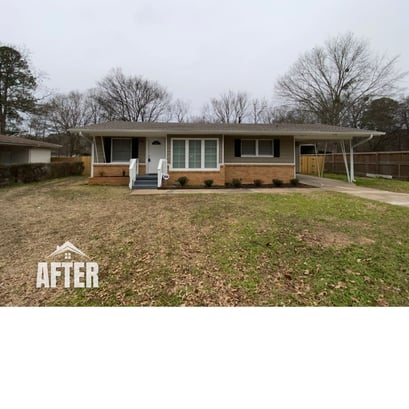 Can you believe we’re already in the home stretch of 2017? The year flew by for many of us. The world of real estate is a whirlwind. We’ve seen a lot in the past year—but where have we landed? As we head towards the holidays and a new year, it’s time to stop and assess where we are as real estate investors, a national real estate market, and where we want to be for the future.
Can you believe we’re already in the home stretch of 2017? The year flew by for many of us. The world of real estate is a whirlwind. We’ve seen a lot in the past year—but where have we landed? As we head towards the holidays and a new year, it’s time to stop and assess where we are as real estate investors, a national real estate market, and where we want to be for the future.
Spoilers: the outlook for real estate investors is still very good.
3 Things Real Estate Investors Should Consider at the End of Third Quarter 2017
Despite rising prices, the single-family rental market is strong.
Interesting data analysis from HouseCanary reveals an optimistic outlook for single-family real estate investment. As we’ve seen, the market has become progressively more challenging for flippers as returns continued to drop this year. But for single-family investors, the story isn’t the same despite rising home prices.
HouseCanary’s data seeks to benchmark the health of markets for single-family investors from states, zip codes, and neighborhoods based on a metric called the Effective Gross Yield (EGY), which they define as current fair market annualized rent minus estimated property tax, divided by the current fair market home value.
What they found in the third quarter of 2017 is encouraging—particularly for the markets we find ourselves in at Memphis Invest: Memphis (13.7% EGY), Dallas (8.6%), Houston (9.6%), and now Oklahoma City (11.2%) and Little Rock. In the southern and central United States, we see relatively high EGY (9% or higher average in Texas, Tennessee, Arkansas, and Oklahoma). This is a testament to the overall health (and decreased risk) of investing in single-family rental properties.

(Source: HouseCanary. State percentage effective gross yield.)
While this isn’t the only metric worth considering, it is notable. While other investment strategies might be struggling against the tide of rising home prices, we see that a buy-and-hold investment strategy that earns passive rental income still holds great potential for real estate investors.
Disasters don’t always provide investment opportunities.
During the end of summer and early fall, it seems like the nation experienced more than its fair share of national disasters. Hurricanes Harvey and Irma ravaged the southern United States while wildfires raged in Montana and California.
In many situations, real estate investors would be led to believe the disasters lead to investment opportunities. After all, financial disasters often do. We often can swoop in, pick up the pieces, and turn things around into something good. But not all disasters can be salvaged. There are problems with the idea of trying to take a property that has been damaged by a natural disaster and turning it into an investment property.
Namely, the damages present after a natural disaster are often too great to make an investment worthwhile. Especially in the case of a hurricane, a property may suffer the lingering effects of mold and water damage, which can lead to repercussions years after the fact. Even a deeply discounted price on a damaged property isn’t always worth the expense and process of fixing the extent of disaster damage.
That’s not to say investors can’t find investment opportunities in the aftermath. It’s only a warning: real estate investors would do well not to jump in and snap up properties just because it sounds like a good deal. Distressed properties—in this case, very distressed—come with a lot of risk.
Home prices are still rising.
Over the course of 2017, we’ve continued to see inflating home prices nationwide with their own set of consequences. In many markets it has caused a slowdown, particularly in the low and mid-range and especially where supply is squeezed. For first-time homebuyers, this has caused both delay and compromise. The ever-inflating issue of student debt continues to hang a dark cloud over the proposition of homeownership, and when it’s coupled with market scarcity and high prices, it leads to even more consumer discouragement.
For real estate investors, this may mean more opportunity for long-term renters, but it’s also a sign of great competition for the modestly priced properties that are growing fewer and farther between.
A turnkey real estate provider may offer another avenue for acquiring rental properties that circumvent the general population of would-be homebuyers that flood the general real estate market.
Looking for buy-and-hold opportunities? Look no further.












